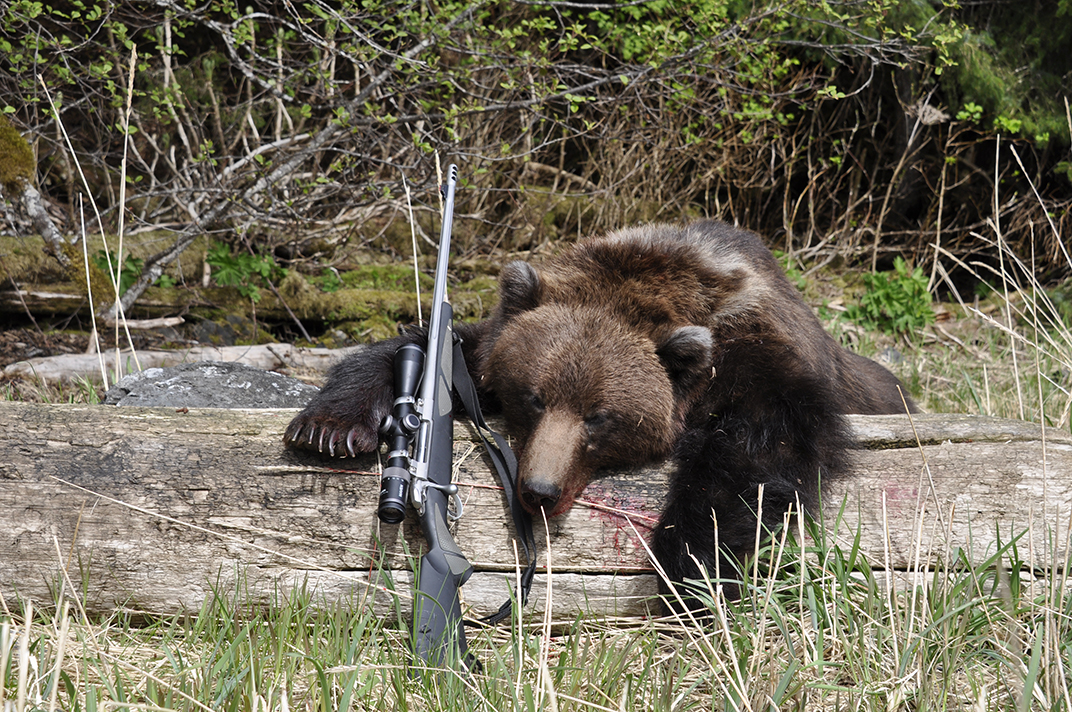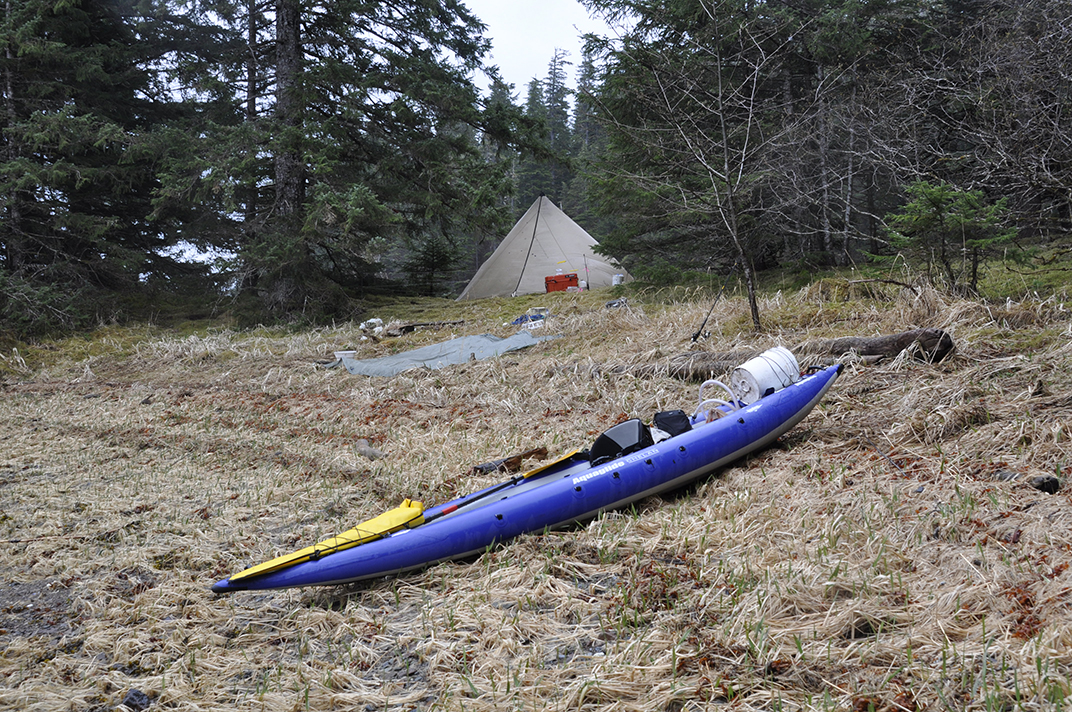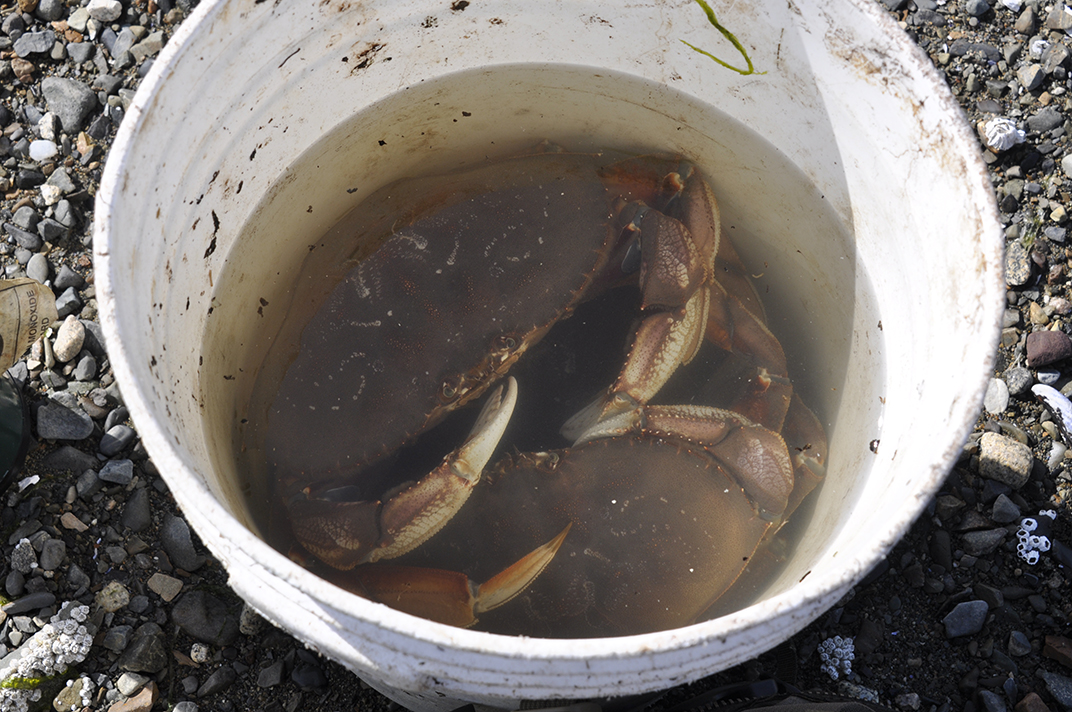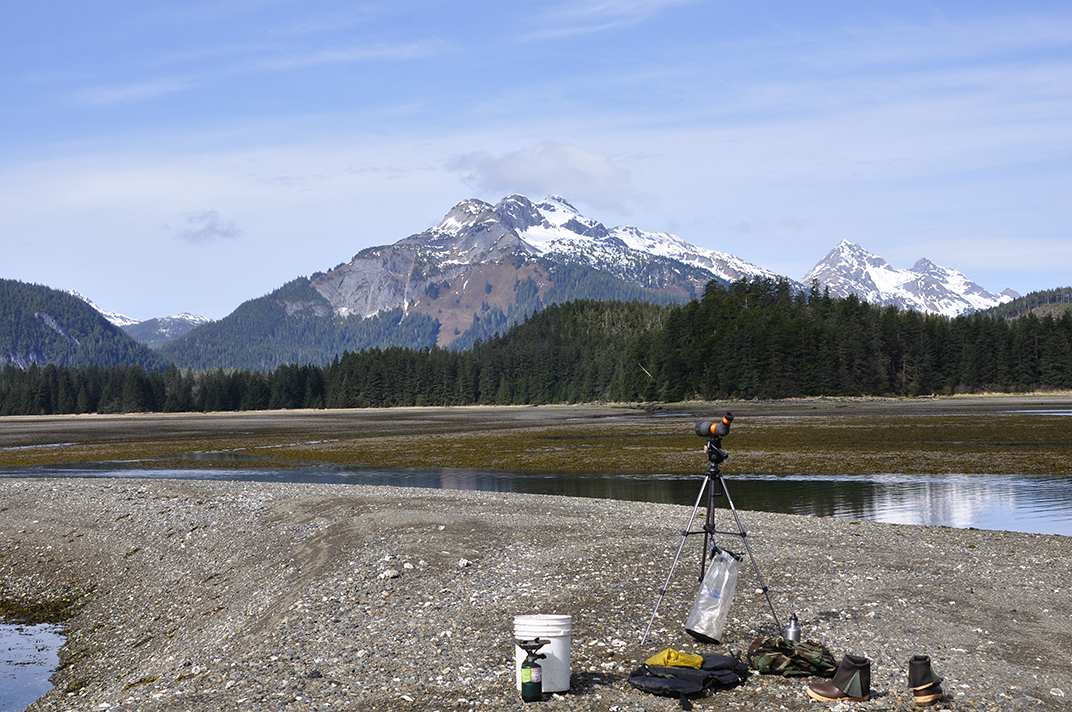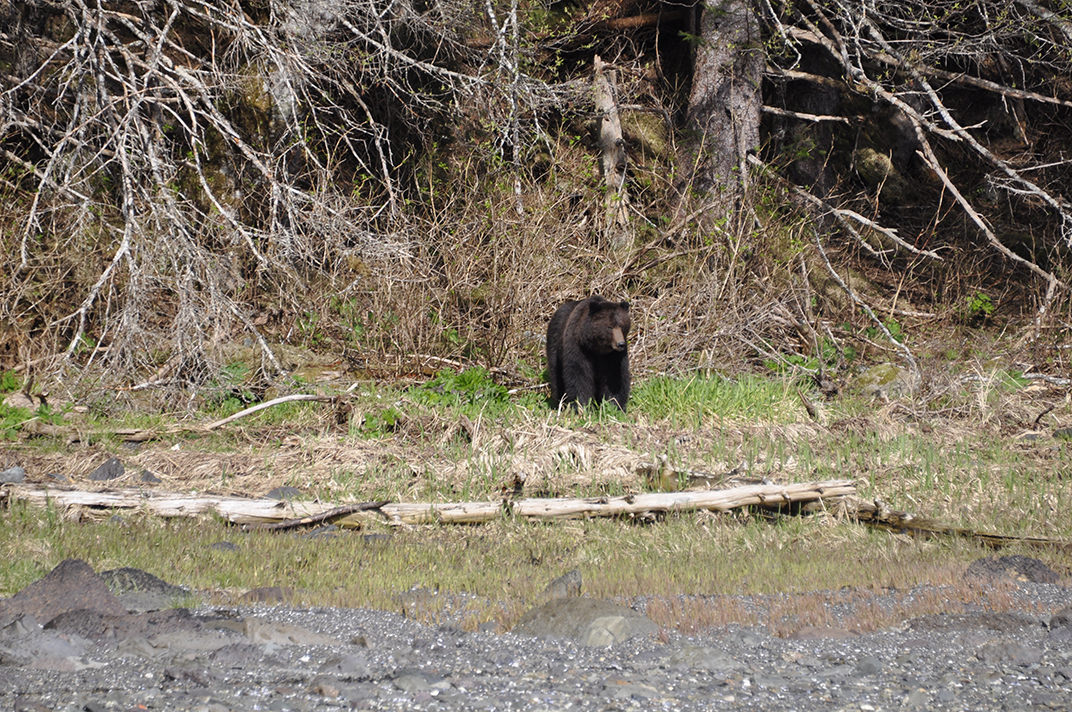There’s a spectrum of approaches when it comes to achieving your goals. One end of the spectrum is defined by deliberate practice so you continually improve until the goal can no longer avoid you. The other end involves banging your head against a wall. These two goal posts can be labeled Persistence and Insanity – there’s often a very hazy line separating them.
Einstein once defined insanity as, “doing the same thing over and over again while expecting different results”. Though I envision that Albert also had a pretty good grasp of “persistence”, he let Mr. Webster define that as, “continuing firmly or obstinately in a course of action in spite of difficulty or opposition.” It was persistence that secured success on a recent return trip to one of the big islands in southeast Alaska, but it was a whitetail hunt in the state of my upbringing that originally got me wondering about the difference between persistence and insanity.
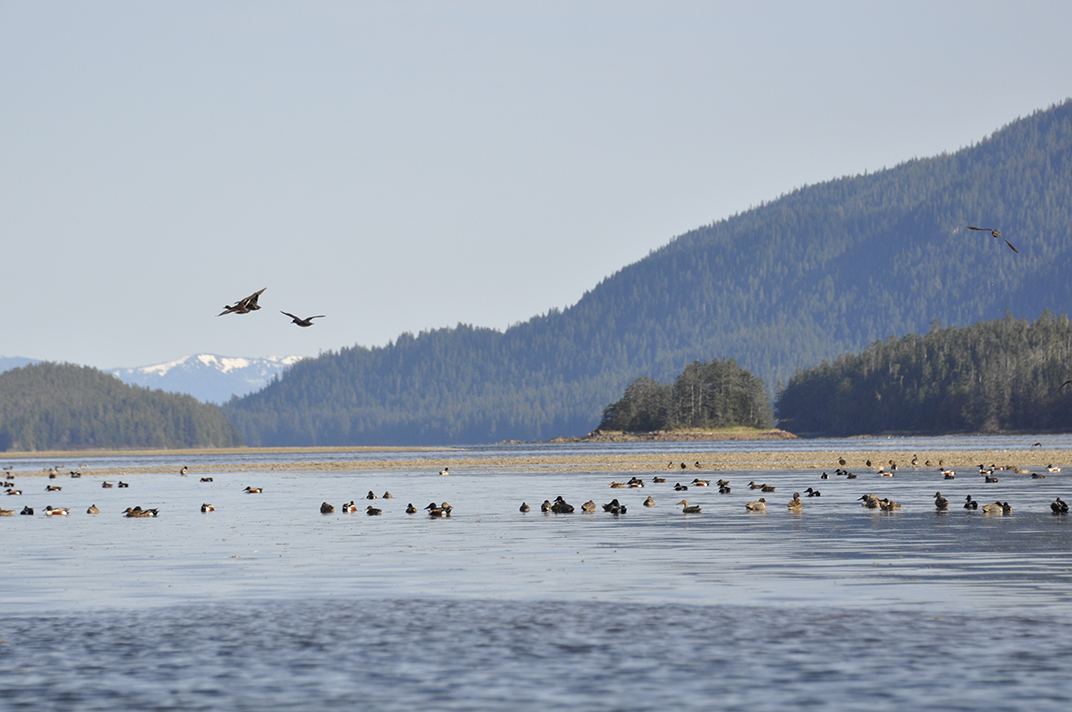
In 2016, I made a pivotal trip from my new home in Alaska back to the Minnesota woods where I grew up. It was my twentieth season bowhunting whitetails there. Two decades of obsessive hunting had yet to produce a real trophy – the definition of which my brother and I debate every year. Was it insane to think that I would ever harvest a monster? Was I just banging my head against a wall of hardwood trees every fall? Where is the line between persistence and insanity?
Against my family’s wishes, I spent every possible minute from pre-dawn to post-dusk from November 5th through November 20th haunting the woods from various carefully selected tree stands. I genuinely believed for the first two-thirds of my life, that if I hunted long enough, a true mature trophy would wander through our woods and I would be there when he did. Dozens of deer comfortably walked by me each day but never a mature buck. No amount of persistence – scent discipline, stand selection, or patience – was going to make a huge old buck appear in places where they simply did not want to go. I accepted that it was insane to maintain my expectations so…I changed them! I’m now comfortable hunting there with just my stick and string and hope to harvest the first legal buck I can. The decreased pressure feels great.
This spring’s coastal brown bear hunt was a long-awaited return trip. Four years prior, I’d hunted the same tidal flats and sorted through numerous bruins until I spotted one that made me say, “Oh boy, he’s a big one!” My hunting buddy and I snuck into 125-yards and let him have it. I can vividly picture where the first three rounds struck that big, old boar. They appeared mortal and quickly brought the bear off his feet. As he was lying on his side, he moved slightly, opening a window to his heart, so I sent a fourth shot down range. Instead of sealing the coffin, it launched him to his feet and he bolted into the woods.
Platter-sized splashes of blood dwindled over a 600-yard blood trail to miniscule drops spaced far apart. Then, it was mere scuffs in the moss before the trail disappeared completely. We persistently followed our intuition down various trails the next day and then insanely grid searched for another. We never recovered that bear. For the last four year’s he’s haunted me when I close my eyes at night. However, every day I awoke and visualized how to do things differently so I’d be primed for success when my four-year waiting period elapsed.
This spring, I made the pilgrimage back to my original camp and found the cache of beach treasures still hidden in the woods. I had much of the same gear as the initial trip but a better gun and those four additional years of planning and big game hunting experience in my toolkit. Hunting solo this year, the parameters for safety and efficacy were different. I was well-aware of how mortifying it is to comb through the dark abyss of those bear infested Sitka spruce forests. I would only take a shot that promised lethal, anchoring, initial placement and enough open terrain for at least one follow-up. Also, I wouldn’t shoot if it was raining.
The wind and rain came in multiple combinations for the first three days. I glassed from the comfort of camp and familiarized myself with the resident bears, read books, dreamed up hunting articles, and waited patiently for the right opportunity.
On day four, the rainy weather moved out and gave way to blue skies and a warm sun and I kayaked farther about the bay to find a new glassing point. The final selection was humorously unconventional but amazingly effective – a gravel bar that was submerged at high tide but exposed for 75% of the day. The seals found sanctuary and a sunny napping spot there and were upset that I kicked them out. For me, it provided the best view of the three areas I had learned were the bears’ favorite feeding grounds. It was equal striking distance to each of these shores. Being persistent now entailed endless glassing and keeping my mind busy enough to stave off the urge to go exploring and stinking the place up.
Each morning, I’d paddle to the far cove in search of Dungeness crabs. This began with a series of inefficient beach trash crab traps. By the end of the week, I learned that sight fishing them using a large halibut jig tipped with some herring was superior to trapping. I’d fill a beach trash bucket with legal crabs and then paddle to “seal island” for a day of reading classic literature and eating like a savage.
Reflecting upon persistence, I thought back to an old hunting buddy of mine. Taylor was a new hunter when I met him but he had the gumption for hunting and managed to find a way into our circle. By the time he did, our group’s spot and stalk methods were pretty refined. One of our secrets to success was that we wouldn’t undertake stalks with a low-likelihood of success. If an animal wasn’t in a position that allowed us to crawl into bow range, we’d keep looking for the next one. Taylor, however, had a different approach.
Because he was a newbie, we didn’t exactly leave him with the premier hunting grounds, and he became creative with the land and the animals we left him. He just started crawling after every buck he found. When he started shooting animals on these ridiculous stalks, my buddy Matt and I gave him grief for getting lucky. But soon we came to understand that there was a large component of persistence in his success. Taylor’s persistence in crawling towards the best spots he could muster was great practice and put him in a good position to let situations evolve naturally.
This steered me into creating a similar plan for bear hunting. I began paddling towards every solo bear I spotted. I pursued a dozen or more bears over the next three days. On day five alone, I crisscrossed ten miles around the bay to pursue five different bears in the last two hours of daylight. It was a humbling experience chasing those rascals. It seemed they were always feeding behind driftwood logs or hanging near the edge of the trees – often changing their actions for no apparent reason. Through this process of deliberate practice, I fine-tuned the amphibious approach and furthered my knowledge of bear behavior and their zone of comfort. This was persistence defined.
I learned that If I had to cross upwind to gain an angle of approach, I could be as close as 650-yards before my smell would concern them. At roughly 300-yards, some of the bears would start to see the top blade of my kayak paddle waving above my head as the lower one stroked through the water. At roughly 200-yards, some of them would notice my face and recognize me as human or threatening. If I pressed on, they’d move off when I was 150-yards away. Also, I learned how long it took me to paddle to each location and how far I could go without resting. The bears revealed their feeding routes and where they would predictably stop to graze and where they would cruise past. They demonstrated their preoccupations and their intuitions for danger. They revealed a major weakness – they simply don’t expect danger to swim up from the sea. Despite this progress, I kept having flashbacks to Minnesota. I was doing something insane…
This location had been highly recommended by the former area biologist and I had now spent multiple weeks in the area if I included the previous hunt. I just wasn’t seeing huge brown bears as I envisioned I would. I had yet to see a true ten-footer and realized that holding out for a monster was insane. As I’d done with my whitetails, I re-defined my definition of “trophy” and set a goal that would make me indelibly happy. I was just going to keep being persistent and shoot a regular old bear when the opportunity presented…and do it via my newfound amphibious methods.
I had a few Dungeness crabs for second breakfast again the final day of the trip and was finishing The Count of Monte Cristo while preparing more crabs for lunch. After turning the last page, I got behind the spotter and scanned the territory. A big dark blob appeared on the coastline up the bay. I instantly envisioned everything me and the bear were going to do for the next hour. I knew the hour would end with us face to face.
It’s amazing how focus feeds adrenaline and pushes your body to new levels of endurance. I quickly loaded up and paddled like a banshee. The beach turned from gravel to heavy stone and steered the bear’s course into the woods. I anticipated where it would return to the beach and paddled just enough to keep pace with the wind and tide to remain there. The wind was in my face and the sun was at my back. I was confident that I’d kill the bear.
It emerged from the woods and resumed feeding slowly along the grassy shoreline. I paddled to within 500-yards and then unclipped my kayak paddle in the middle and turned it into twin canoe paddles. Not only did this eliminate the bright yellow beacon above my head, using them like ski poles proved to be more efficient. I was soon about 300-yards away and concealing my profile by kneeling low in the bow of the kayak. Even with the small motions, it was only a couple strokes before I infiltrated inside 200 yards. It was time to lay prone. I was even more confident that I was going to kill the bear.
The bright sun at my back made the ocean’s glare blindingly bright and shadowed out my face. I was nothing more than a floating ‘thing’ on the water – a floating thing with a .300 Win Mag as a bowsprit. I restricted myself to micro-movements with my hands. The paddle blades became my personal seal flippers and allowed me to silently swim the kayak into range. I was certainly going to harvest the bear.
I flippered effortlessly into the kill zone and into the shallows along the shore. This elicited a memory of the time I harvested a black bear from a zodiac by slipping off the side into knee-deep water, crouching behind the boat as I waded into shore and then using a paddle as a gun rest. Remembering how well that worked, I rolled off the side of the kayak opposite the bear and attempted to duplicate the feat. The apparent “knee deep” water was a fantastic illusion and I found myself kicking like crazy to avoid swallowing the ocean. I hugged the stupid kayak like it was a life raft and swam with heavy boots and too many clothes through the stupid ocean until I could get a toe on the stupid rocks – now not at all confident I would kill the bear!
The bear was preoccupied with its life of eating, roaming, and napping and it gave the commotion only a brief weird look before calmly moseying up the shoreline. I sulked in the shallows until the bear ambled away and was concealed by some shoreline rocks. The refusal of my rangefinder to give me a reading indicated that it did not approve of my swim and that I’d have to fend for myself for the rest of the hunt. The bear was still relaxed. The game was still on. Confidence neutral.
I returned to my prone position and resumed my seal flippering. The sun was still at my back. The breeze blew in my face. I was completely washed of distractions and, for the first time in my life, my means of propulsion were faster than the animal I was trying to keep pace with.
The boat glided into the shoals just fifty yards from my quarry. I had entered the bear’s personal space so strategically that it couldn’t recognize me as a threat. It walked a few steps my way to evade a big driftwood log and lowered his head to graze on some sedges. From my dry, stable rest, I eyed the shot I’d been dreaming about for four years and sent it. The bullet impacted at the huge juncture of bone just in front of his hump and pierced the vital organs. There was no need for a follow-up shot. There would be no blood trailing. Persistence had prevailed.
The remaining hours of the trip were a happy blur. I completed all the necessary tasks while ruminating about the stories I would write. Feedback from readers on my first submissions to the JOMH had my wheels spinning. I was addicted and wanted more. This caused me to think endlessly about delivering more entertaining ideas and stories to my peers. As such, I’m hoping that you can envision all the inner-dialogues I had with myself throughout this solo hunting adventure. Of all the countless theories and tricks that came to mind while glassing that
tidal flat, evaluating persistence and insanity is the one, I think, with the most potential to help my fellow hunters.
So, my ultimate advice is this, employ deliberate practice on every hunt. Routinely ask yourself whether you were more methodical today than yesterday and what can be done tomorrow to gain an advantage. If you can stay nearer to the persistent side of the spectrum, you’ll find yourself eating more steak and less tag soup.
Happy Hunting
Steve Opat


